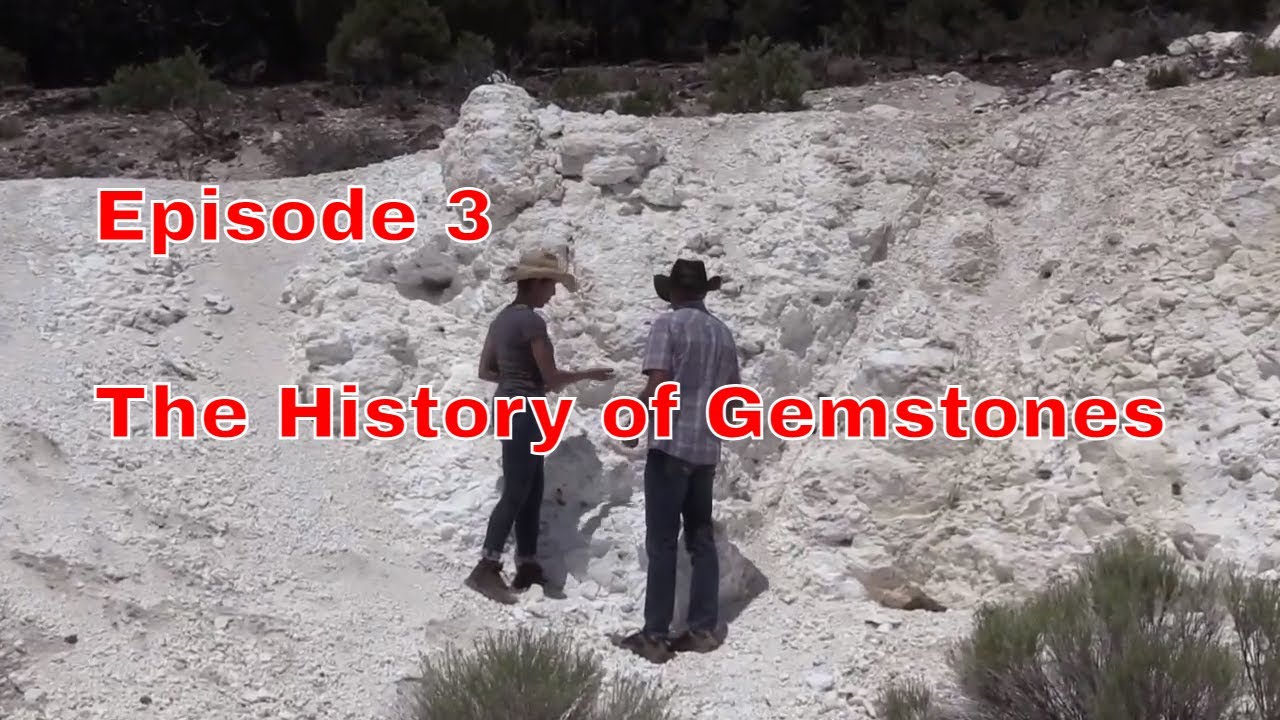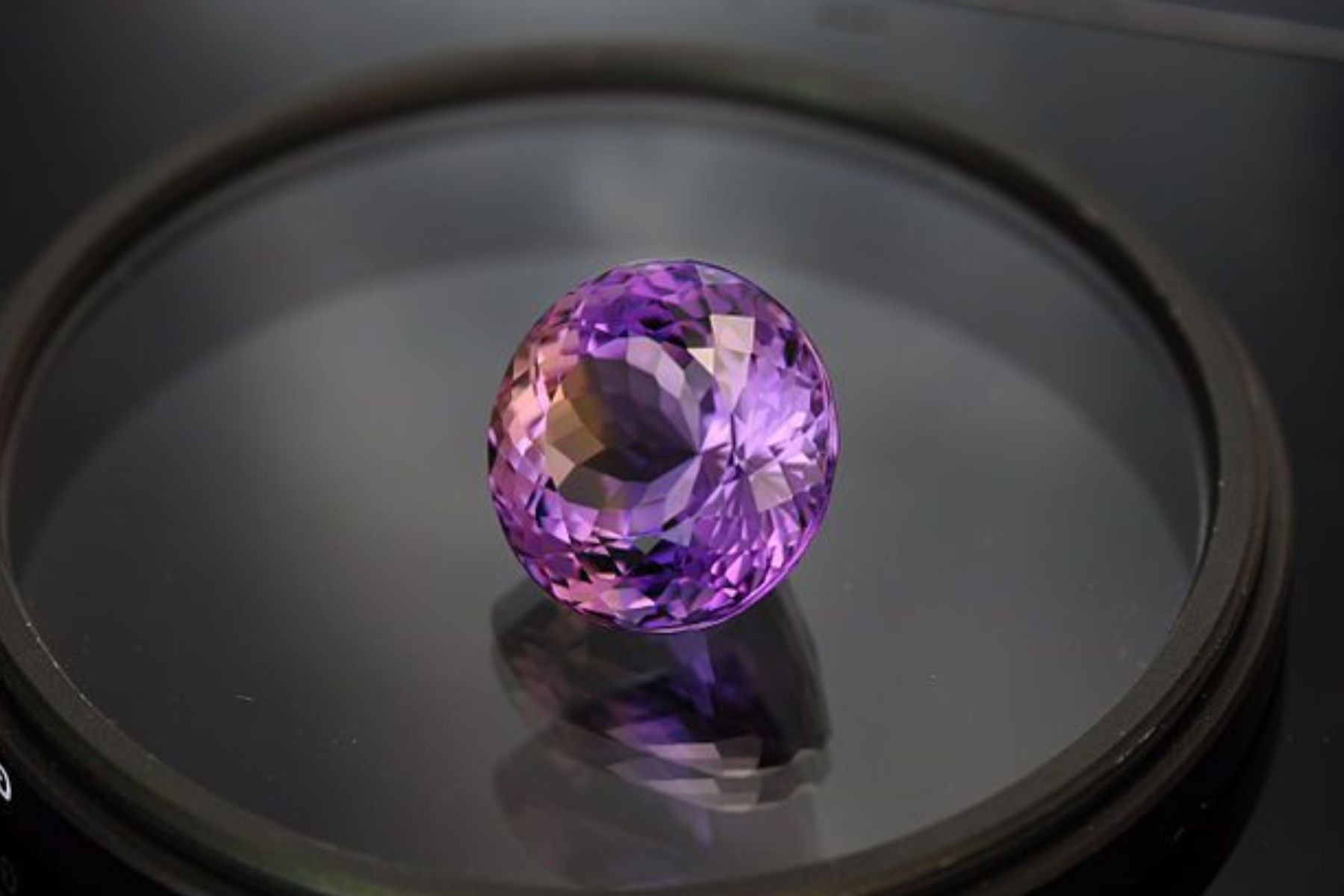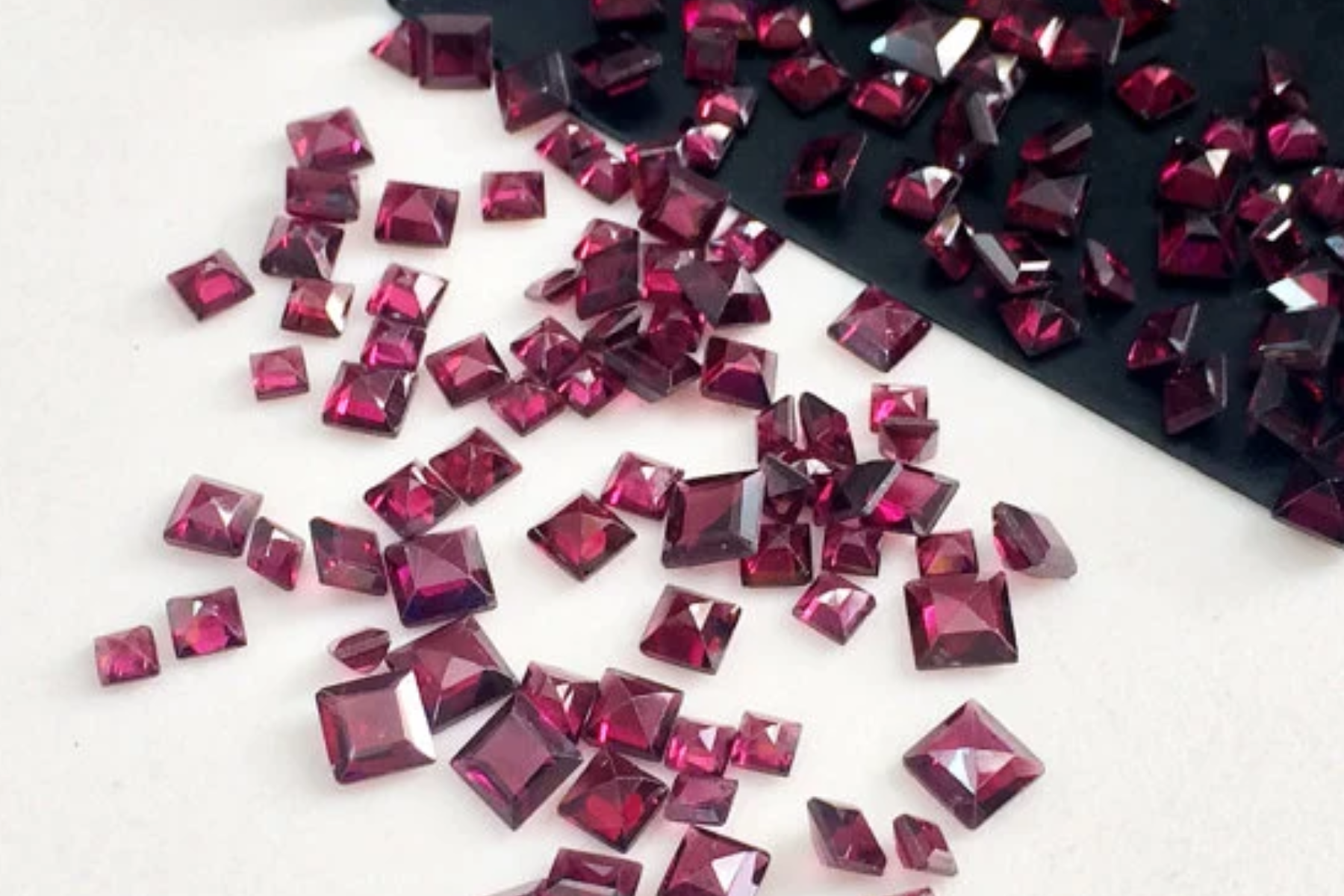This article will delve into the symbolism and meanings behind gemstone geometrical shapes.
Gemstoneshave fascinated humanity for millennia, with their vivid colors and intrinsic beauty. Beyond their aesthetic appeal, gemstones have been valued for their spiritual and healing properties.
Throughout history, civilizations have assigned symbolic meanings to gemstones, often associating them with celestial or natural elements.
One lesser-known aspect of gemstones is their geometrical shapes, each carrying its own unique symbolism and significance.
The Historical Significance Of Gemstones
Since ancient times, gemstones have played an integral role in human culture. They were believed to possess mystical properties and were used in spiritual practices, adornments, and even as remedies for various ailments.

Episode 3: The History of Gemstones.
The significance of gemstones extended across cultures and civilizations, from the Egyptians and Greeks to the Chinese and Native Americans.
And also, according to the University of Washington, gems have a long history of use in a variety of contexts, including commerce and medicine. Gems are so valuable that some individuals even utilize them as a kind of investment.
For some people, wearing jewels has been a way to flaunt their money, rank, and power. In bygone eras, royalty was frequently in possession of the best stones.
The Power Of Symbols In Human Culture
Symbols have always held a special place in human culture. They communicate complex ideas and emotions, transcending language barriers. Gemstones, with their geometric shapes, are no exception.
These shapes carry deep symbolic meanings that resonate with individuals on a subconscious level.
Lapidary - The Art Of Shaping Gemstones Into Geometric Beauty
Lapidary, the ancient art of cutting and polishing gemstones, is the key process that transforms raw minerals into exquisite jewels.
Throughout history, lapidaries have honed their skills to create precise geometric shapes, enhancing the natural beauty of gemstones.
- Selection of Rough Gemstones- Lapidaries begin by selecting rough gemstones with promising color and clarity. The shape and size of the rough gemstone influence the final design, so experienced lapidaries carefully analyze the material.
- Marking the Gemstone- The lapidary starts by marking the rough gemstone to outline the desired geometric shape. Precision is essential, as each cut significantly affects the gemstone's appearance and value.
- Sawing- To create a manageable starting piece, lapidaries use a diamondsaw to cut the rough gemstone roughly into the desired shape. This initial cut helps reduce waste and facilitates the subsequent shaping process.
- Shaping and Preforming- Lapidaries use various cutting tools, such as diamond blades and wheels, to shape the gemstone closer to the desired geometric form. Pre-forming involves cutting away unnecessary material, gradually revealing the gemstone's inner beauty.
- Faceting- Faceting is a popular technique used to create geometric shapes with precise facets on the gemstone's surface. The gemstone is carefully positioned on a rotating lap wheel, and the facets are cut one by one to achieve maximum brilliance and sparkle. Each facet must be at the correct angle and size to ensure the gemstone's symmetry and overall appearance.
- Cabochon Cutting - Cabochon cutting is another lapidary technique used to shape gemstones into smooth, rounded forms. The gemstone is ground into a smooth, convex shape, with a flat base for easy setting in jewelry. Cabochon cuts are commonly used for gems like opal, moonstone, and turquoise.
- Sanding and Polishing - After shaping and faceting, lapidaries progress to sanding the gemstone to remove any scratches or imperfections left from the cutting process. Gradually, finer and finer grits of sandpaper are used until the gemstone's surface achieves a high level of smoothness and luster. Finally, the gemstone is polished to achieve the desired shine and brilliance.
- Quality Assessment- Throughout the lapidary process, the gemstone is continually evaluated for its clarity, color, and symmetry. Skilled lapidaries use their expertise to make adjustments as needed to bring out the gemstone's best attributes.
Gemstone Shapes - An Overview
Gemstones can be found in a wide array of shapes, each representing different aspects of life and nature. From circular and triangular to heart-shaped and hexagonal, each shape conveys a unique message to those who understand their significance.
The Symbolism Of Circular Gemstones
The circle is an everyday representation that can refer to a wide range of things. It exemplifies the concepts of completeness, wholeness, initial perfection, the Self, the infinite, eternity, and timelessness, according to Umich.
Circular gemstones, such as spheres and discs, represent wholeness, unity, and eternity. They have no beginning or end, symbolizing the eternal cycles of life and the cosmos. Circular gemstones are associated with harmony, balance, and the infinite.
The Meanings Behind Triangular Gemstones
Triangular gemstones embody the trinity of life - mind, body, and spirit. They symbolize creativity, change, and progression. Triangles are also connected to the elements of fire and stability, making them powerful symbols of transformation and strength.
The Spiritual Connection Of Square And Rectangular Gemstones
Square and rectangular gemstones carry the energy of stability, grounding, and structure. They represent the four cardinal directions and the four elements - earth, air, water, and fire. These shapes provide a sense of security and a solid foundation for growth.
The Mystical Properties Of Oval Gemstones
Oval gemstones combine the symbolism of circles and ovals. They represent fertility, rebirth, and new beginnings. Ovals are believed to enhance one's intuitive abilities and foster a connection with the spiritual realm.
The Allure Of Heart-shaped Gemstones
Heart-shaped gemstones are the embodiment of love, compassion, and affection. They have been cherished as symbols of romance and emotional healing. These gemstones are often exchanged as tokens of love and friendship.
The Energetic Power Of Star And Hexagonal Gemstones
Star and hexagonal gemstones radiate vibrant energy and are associated with cosmic forces. They represent guidance, clarity, and alignment with the universe. Star-shaped gemstones, in particular, are believed to bring good fortune.

Hold the Stars in Your Hands [Phenomenal Gemstones]
The Unique Qualities Of Octagonal Gemstones
Octagonal gemstones hold the energy of balance and strength. The number eight is often considered auspicious, symbolizing prosperity and abundance. Octagonal gemstones promote resilience and adaptability.
The Natural Geometric Beauty Of Gemstones
Formation Of Gemstones
- Gemstones are minerals formed deep within the Earth's crust under intense pressure and high temperatures over millions of years.
- The formation process involves the crystallization of minerals, which gives rise to their unique geometric structures.
Crystal Lattices
- Many gemstones are crystalline in nature, featuring regular and repeating patterns of atoms arranged in a three-dimensional lattice.
- The arrangement of atoms within the crystal lattice determines the gemstone's internal structure and external shape.
- Examples of gemstones with crystal lattices include diamonds(cubic lattice), quartz(hexagonal lattice), and garnets (isometric lattice).
Symmetry In Gemstones
- Gemstones often exhibit symmetrical shapes due to the arrangement of atoms within their crystal lattice.
- Symmetry can be seen in various gemstone cuts, such as round, oval, square, and hexagonal, reflecting the underlying crystal symmetry.
- The symmetry of gemstones enhances their visual appeal and is a crucial factor in determining their value.
Crystal Habit
- Crystal habit refers to the natural shape or form a mineral takes when it grows without any external influences.
- Some gemstones exhibit distinct crystal habits, such as prismatic, tabular, and equant, which are manifestations of their internal crystal structure.
- The crystal habit of gemstones contributes to the creation of unique and recognizable shapes.
Cleavage And Fracture
- Gemstones can break along specific planes due to their internal atomic arrangement, a property known as cleavage.
- Cleavage results in the formation of smooth, flat surfaces, contributing to the development of geometric shapes within gemstones.
- In contrast, fracture occurs when gemstones break irregularly, leading to jagged and less-defined shapes.
Natural Gemstone Shapes
- Crystalssuch as quartz and tourmalineoften appear in elongated, prismatic shapes, reflecting their internal hexagonal crystal lattice.
- Cubic crystals like diamonds exhibit well-defined, geometric shapes with sharp edges and straight lines.
- Amethystand citrinecrystals often form hexagonal prisms with pointed tips, showcasing their internal crystal habit.
Polished Gemstones
- The UC Berkeley Rausser College of Natural Resourcestold that after a gemstone has been sawed and ground to the correct form, as well as sanded to eliminate rough markings left by coarser grits, it is typically polished to a mirror-like shine in order to assist light reflection from the surface of the stone. This is done in order to enhance the stone's brilliance.
- Faceted gemstones, such as brilliant-cut diamonds, are meticulously cut with multiple facets to maximize their brilliance and sparkle.
- Cabochons, on the other hand, have smooth, rounded tops with a flat base, accentuating the unique colors and inclusions within the gemstone.
Organic Gemstones
- Not all gemstones possess rigid geometric shapes; some, like pearls and amber, are organic in origin.
- Pearls, formed inside mollusks, exhibit spherical shapes due to the layering of nacre around an irritant.
- Amber, a fossilized tree resin, may appear in various irregular shapes, influenced by the original flow and form of the resin.
The Sacred Geometry Of Gemstone Shapes
The study of sacred geometry unveils the underlying patterns and proportions found in nature and the cosmos. Gemstone shapes, too, follow these geometric principles, connecting them to the sacred and divine.
The Influence Of Color On Gemstone Symbolism
In addition to shape, the color of a gemstone plays a significant role in its symbolism. Different hues carry distinct energies and meanings. For instance, blue gemstones symbolize tranquility and communication, while red gemstones represent passion and vitality.

What is Photochroism? Color Change in Gemstones
Wearing And Using Gemstone Shapes Intentionally
To harness the energies and symbolism of gemstone shapes, individuals can wear them as jewelry or place them in specific areas of their living spaces. Meditating with gemstones can also enhance their spiritual benefits.
People Also Ask
Do Gemstone Shapes Have The Same Meanings Across Different Cultures?
While some interpretations of gemstone shapes may overlap across cultures, there can be variations in their symbolism. Different societies and belief systems may assign unique meanings to certain shapes.
Can Gemstone Shapes Influence A Person's Energy And Emotions?
Yes, many people believe that gemstone shapes can affect an individual's energy and emotions. Each shape carries specific vibrations that resonate with the wearer or user.
How Can I Cleanse And Recharge My Gemstone Shapes?
To cleanse gemstone shapes, you can place them under running water, use a soft cloth, or leave them in the moonlight. To recharge them, expose them to sunlight or use a quartz crystal.
Are Synthetic Gemstones As Effective As Natural Ones In Terms Of Symbolism And Energy?
Synthetic gemstones may look similar to natural ones, but their energetic properties can differ. Natural gemstones are believed to hold more potent and authentic energies.
Can I Combine Different Gemstone Shapes For Enhanced Benefits?
Absolutely! Combining gemstone shapes can create a harmonious blend of energies and amplify their individual properties, resulting in a more balanced and powerful effect.
Conclusion
Gemstone geometrical shapes are not only aesthetically pleasing but also imbued with deep symbolism and meaning. Understanding the significance of these shapes can provide a profound connection to the natural world and spiritual realms.
Whether you wear them for their beauty or use them for their metaphysical properties, gemstones continue to enchant and captivate humanity.


